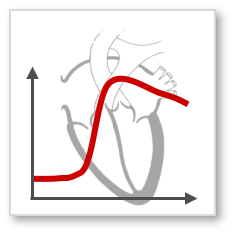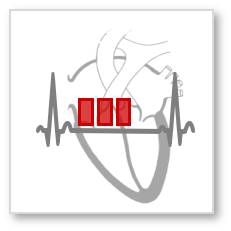Flow, Motion and Parametric Imaging
Blood flow quantification

The assessment of hemodynamic parameters of the cardiovascular system is of critical importance in the diagnosis and risk stratification of cardiac patients. MR imaging offers a range of methods to quantitatively map blood flow parameters and patterns throughout the circulatory system. Our work concerns the development and implementation of methods to probe flow properties, flow energetics and parameters of fluid-structure interactions. We employ multi-dimensional encoding strategies along with advanced image reconstruction approaches to permit data acquisition within clinically acceptable scan times.
Perfusion imaging

Tissue perfusion is a critical parameter in the assessment of ischemic heart disease. MR contrast-enhanced perfusion imaging has been demonstrated to be highly diagnostic. To address the limited spatial resolution and coverage of conventional MR imaging techniques, we design and implement highly undersampled 3D imaging approaches allowing to dynamically map quantitative perfusion information of the entire heart. In close collaboration with clinical partners, these methods are applied on cardiac patients and their diagnostic and prognostic performance is validated relative to current reference methods.
Motion and strain mapping

Alterations of contraction and relaxation patterns of the heart are early and sensitive hallmarks of cardiac dysfunction. Using motion encoding principles based on MR tissue tagging, displacement encoding and tissue phase mapping in conjunction with reduced data acquisition concepts, we develop and apply methods to quantitatively assess motion patterns, tissue shear and strain rates. These data not only serve diagnostic purposes but also provide input and boundary conditions for advanced image-based biomechanical modeling to rationalize findings and predict changes of cardiac anatomy and function under various conditions.
Diffusion tensor imaging

While diffusion tensor imaging has become a key modality of brain imaging, its application to the in-vivo heart is very challenging. Using dedicated MR pulse sequence designs and data processing algorithms, we develop motion compensation and correction approaches to map the fiber architecture of the in-vivo heart in a robust manner. This work enables insights into microstructural alterations and dynamic changes of myocyte aggregates and link to macroscopic observations of cardiac dysfunction. Beyond diffusion tensor imaging, we also explore advanced encoding concepts to map tissue perfusion along with microstructural parameters.